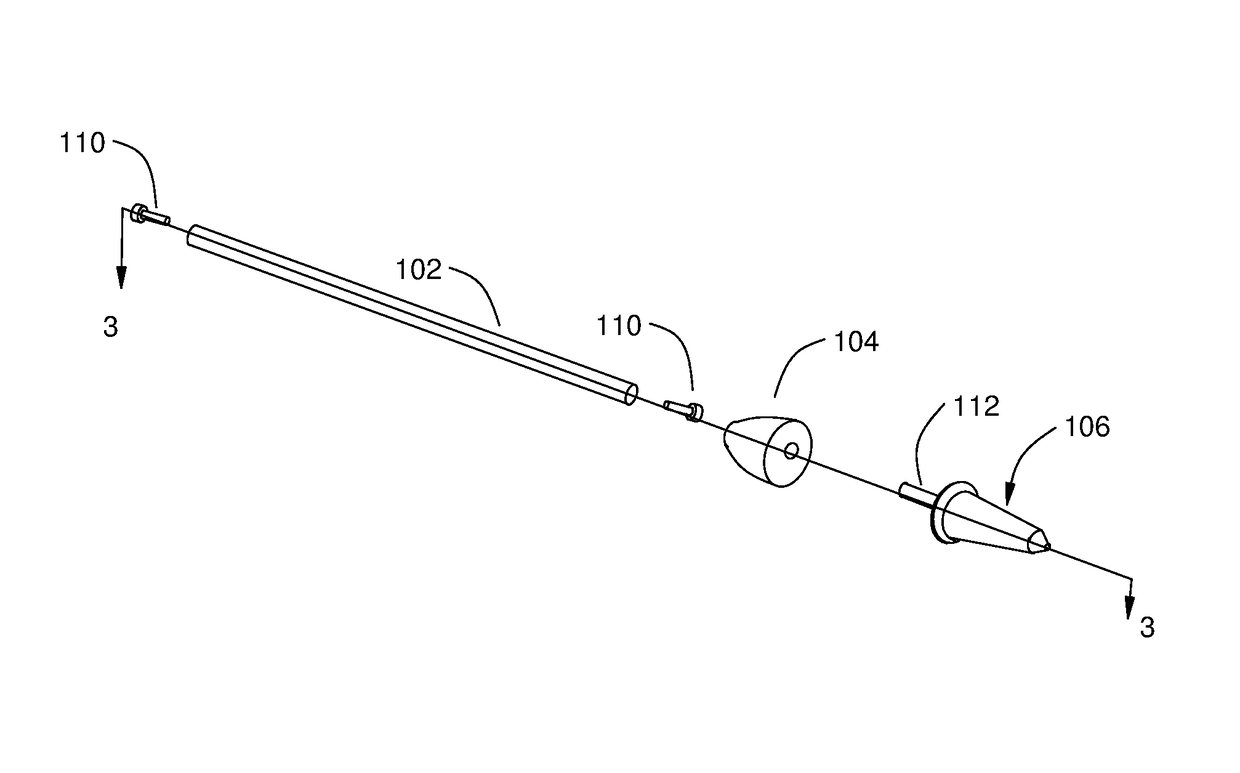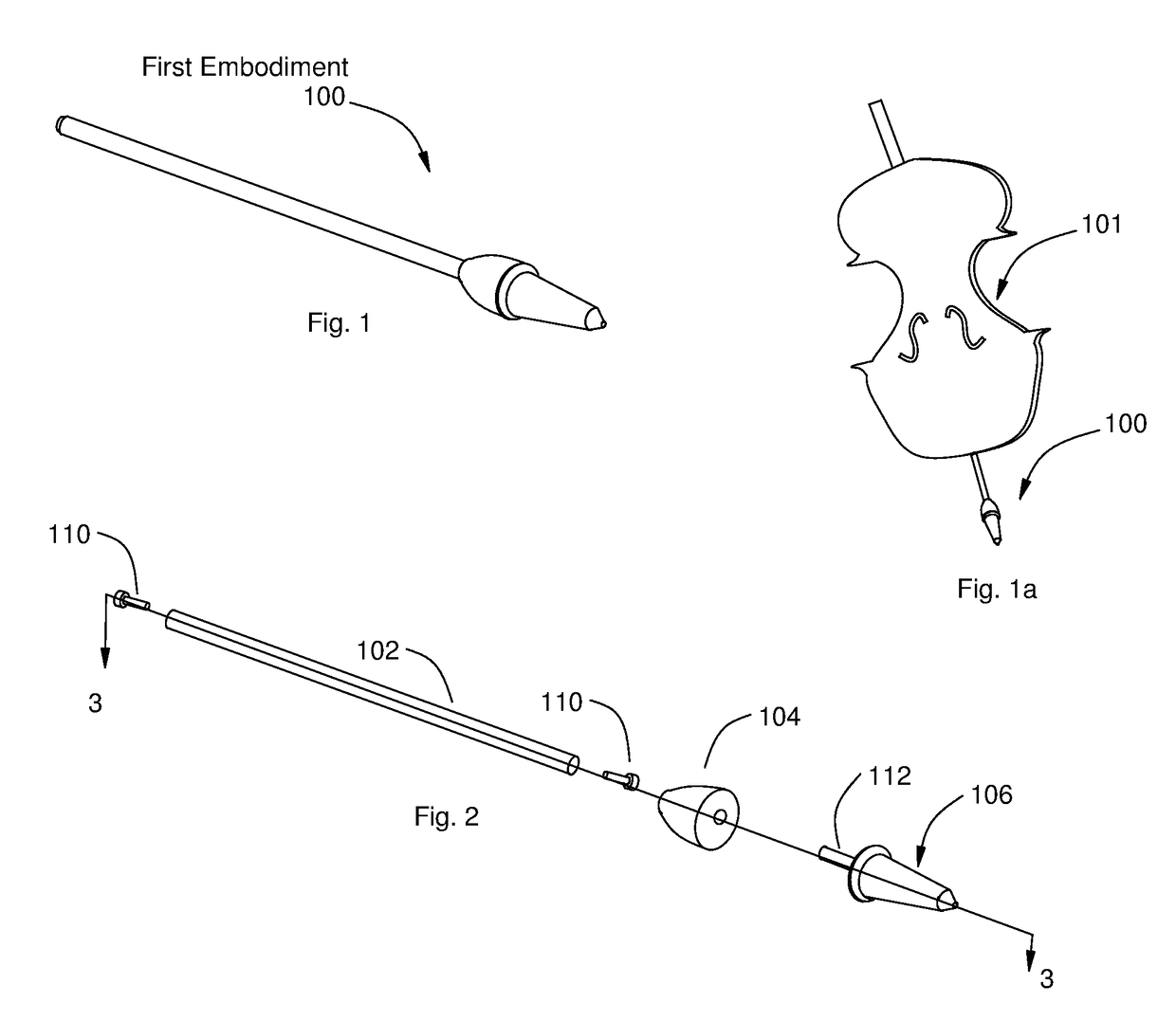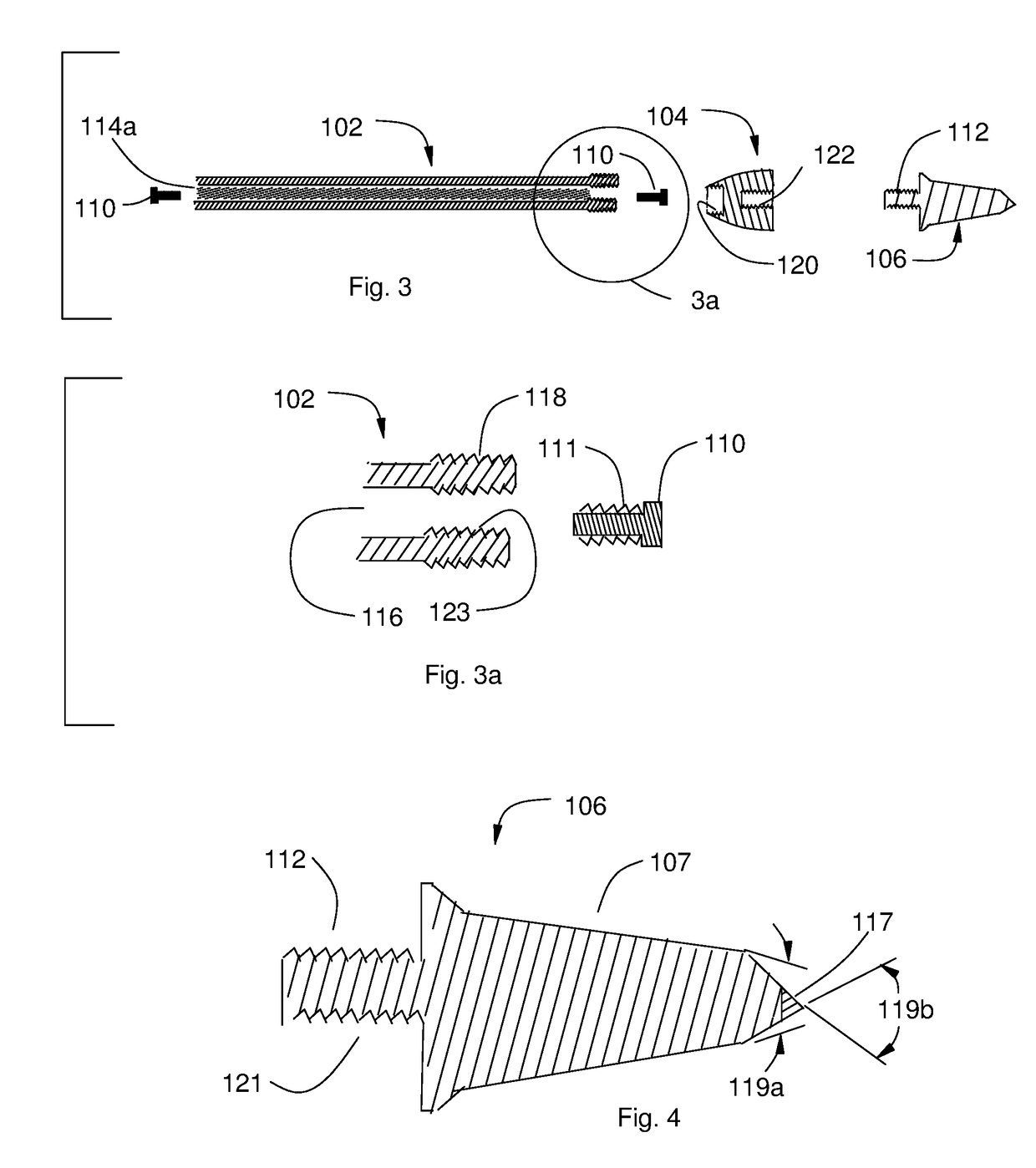Efficient acoustic enhancement of endpins and receptacles for stringed musical instruments and the like using customized filler materials
a technology of endpins and receptacles, which is applied in the direction of mouthpiece/microphone attachments, instruments, violins, etc., can solve the problem that there is no general approach to quickly modify the design, and achieve the effect of improving the acoustic effect and facilitating the modification of the acoustic effect relatively quickly
- Summary
- Abstract
- Description
- Claims
- Application Information
AI Technical Summary
Benefits of technology
Problems solved by technology
Method used
Image
Examples
first embodiment
[0038]The originally used by the Inventor without the filler material 114a with excellent acoustic results for a particular cello. However, when applied to other string instruments, the results were less satisfactory. Favorable acoustic outcomes were therefore achieved by varying the filler material 114a by trial and error. The filler material 114a used include various pellets or powdered materials depending on the acoustic properties desired. Examples of filler material are given in Table 1, together with their acoustic properties.
[0039]
TABLE 1Filler Materials and their PropertiesFiller MaterialsAcoustic Properties1s70 steel shothelps control resonance of the base material2s110 steel shotsame resonance control better greater frequency extension3s70 and s110 More frequency extension than s70 steel steel shot blend.shot less than s1104Bronze shotoverdamped sound and over control of natural resonance of instrument.5Bronze powderextremely damped sound6s110 steel shot control and extens...
second embodiment
[0042]An s70 / s110 steel pellet blend was used for filler materials 114b and 114c. Also used was a 110 / neodymium magnetic in a first prototype for the second embodiment and had the same material as filler material 114a. However, modifications to the filler material were made iteratively by trial and error. Excellent results were obtained for s110 steel shot and neodymium magnetic powder blend with magnetic pellets added.
[0043]FIGS. 8 through 11 illustrate a third embodiment 300 of the present invention, which is a modification of the Inventor's D658,1625S design patent. Third embodiment 300 replaces the pointed tip 106 of embodiment 2 by a ball tip 302 and pedestal 306. The ball tip 302 has a sphere 304 attached to its end. Referring to FIGS. 8, 9 and 11, third embodiment 300 has pedestal 306 with a depression 310 that accommodate the sphere 304 that allows ball tip 302 to rotate freely within it. Additionally, third embodiment 300 has three legs 308 that attach to pedestal 306. In t...
fourth embodiment
[0046]FIG. 13a illustrates locking collet nut 410a. Alternate embodiments to locking collet nut 410a illustrated in FIGS. 13b and 13c which has twelve bores (FIG. 13b) or six bores (FIG. 13c). The reaction of the fourth embodiment with the use of any of the three locking collet nuts 410a through 410c will be apparent and have a different resonance character depending on which collet nut is used. These resonance characteristics will also be different on different instruments and the choice which to use will be the preference of the musician or designer.
[0047]Referring to FIGS. 12 through 13c, rod 102 is inserted into tapered collet body 414 and secured and clamped with a locking collet nut 410. Second collet nut 410b has twelve bores 424 drilled to reduce mass when compared to locking collet nut 410a or hybrid collet nut 410c medium mass lock nut. Second collet nut 410b has filler material 114e added to four of the twelve bores. These four bores are then sealed to retain the fill mat...
PUM
 Login to View More
Login to View More Abstract
Description
Claims
Application Information
 Login to View More
Login to View More - R&D
- Intellectual Property
- Life Sciences
- Materials
- Tech Scout
- Unparalleled Data Quality
- Higher Quality Content
- 60% Fewer Hallucinations
Browse by: Latest US Patents, China's latest patents, Technical Efficacy Thesaurus, Application Domain, Technology Topic, Popular Technical Reports.
© 2025 PatSnap. All rights reserved.Legal|Privacy policy|Modern Slavery Act Transparency Statement|Sitemap|About US| Contact US: help@patsnap.com



